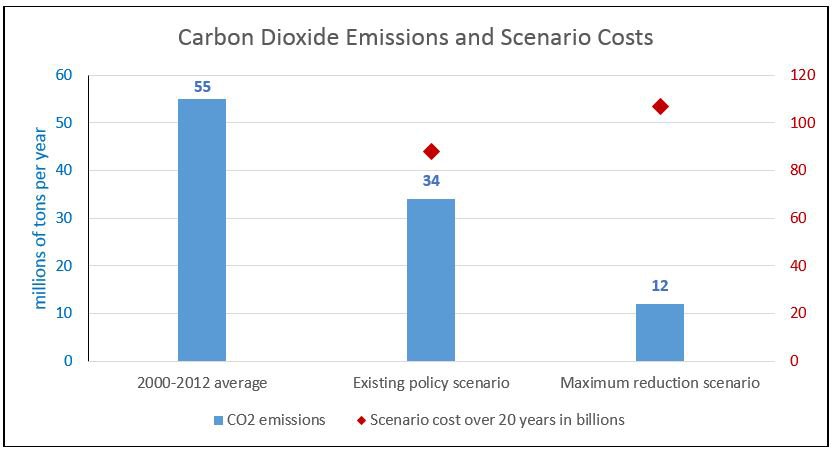Reducing Carbon Emissions From the Northwest Power System
Draft 7th Power Plan indicates region can reach EPA goals with energy efficiency, natural gas-fired generation, and planned coal retirements; zero carbon is not possible with existing technologies
- September 22, 2015
- Carol Winkel

Even in the hydropower-rich Pacific Northwest it’s not possible to have a carbon-free electric power system using today’s technology, according to Council analyses for the Draft Seventh Northwest Power Plan. In fact, the cost of even getting close would be an additional $20 billion for electricity ratepayers over the next 20 years.
However, if the resource strategy in the draft plan is implemented, our region will meet the U.S. Environmental Protection Agency’s carbon dioxide emissions limits, the power system will remain efficient and affordable, and there is a low probability that any new generating plants will be needed before at least 2021.
The resource strategy is heavy on energy efficiency and light on fossil fuel. The strategy calls for developing about 4,500 average megawatts of new efficiency by 2035, acquiring demand response resources to meet extreme winter and summer peak loads when needed, and increasing the use existing natural gas-fired generators to replace three coal-fired power plants in the region as they retire between 2020 and 2026.
The retirement of the three coal plants, in combination with developing energy efficiency, demand response, and increased use of existing natural gas plants will reduce annual carbon dioxide emissions from the 2000-2012 average of 55 million metric tons to 34 million.
The Council modeled several alternative resource strategies designed to further reduce carbon emissions using both available and emerging power generating technologies (low-carbon and zero-carbon). Some of the results from the Council’s analysis are shown in the figure below (all are explained in Chapter 15 of the draft plan).
Using the 2000-2012 average carbon emissions (55 million metric tons per year) as a base for comparison, the “existing policy” scenario tested resource strategies with no carbon emission cost or risk – consistent with current federal law – and resulted in emissions of 34 million tons per year and a cost over 20 years of $88 billion. In comparison, the “maximum carbon reduction/existing technology” scenario, which assumed retiring all existing coal plants serving regional load by 2026, and all inefficient natural gas plants serving regional load by 2031, resulted in 12 million metric tons and a cost of $107 billion.

In short, a zero-carbon power supply is not possible with today’s generating technologies (to replace the lost coal and natural gas plants), and the maximum possible reduction would be expensive, according to the modeling.
This week, the Council begins a 60-day public comment period on the Draft Seventh Plan. The regional power plan provides guidance to the Bonneville Power Administration and utilities on resource development to help ensure a reliable and economical power system over the next 20 years. The Council revises the plan every five years.



